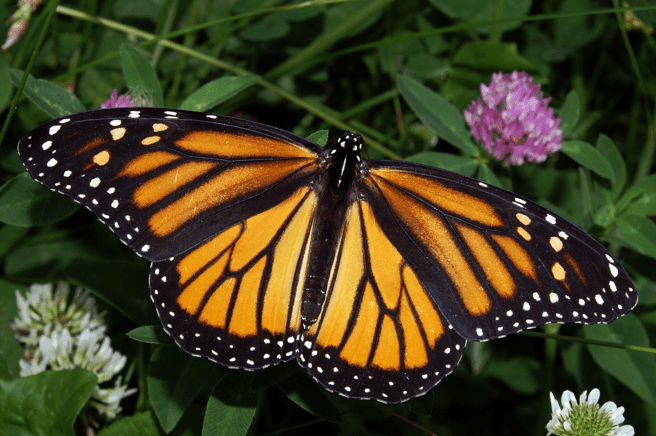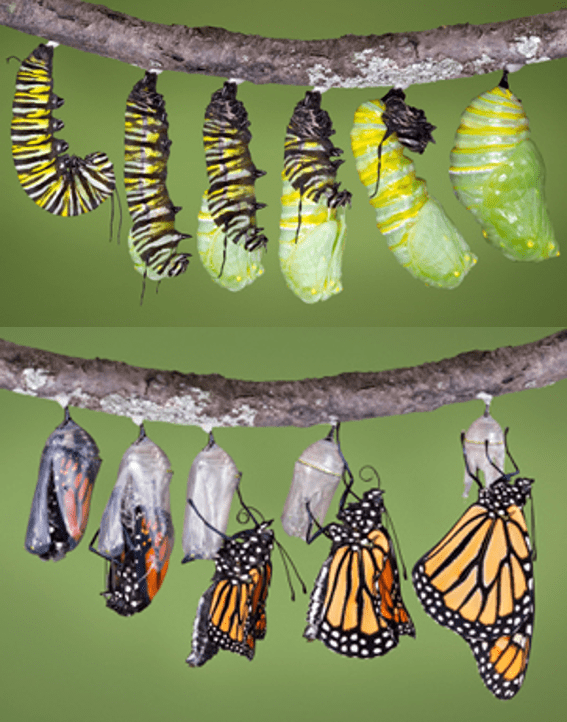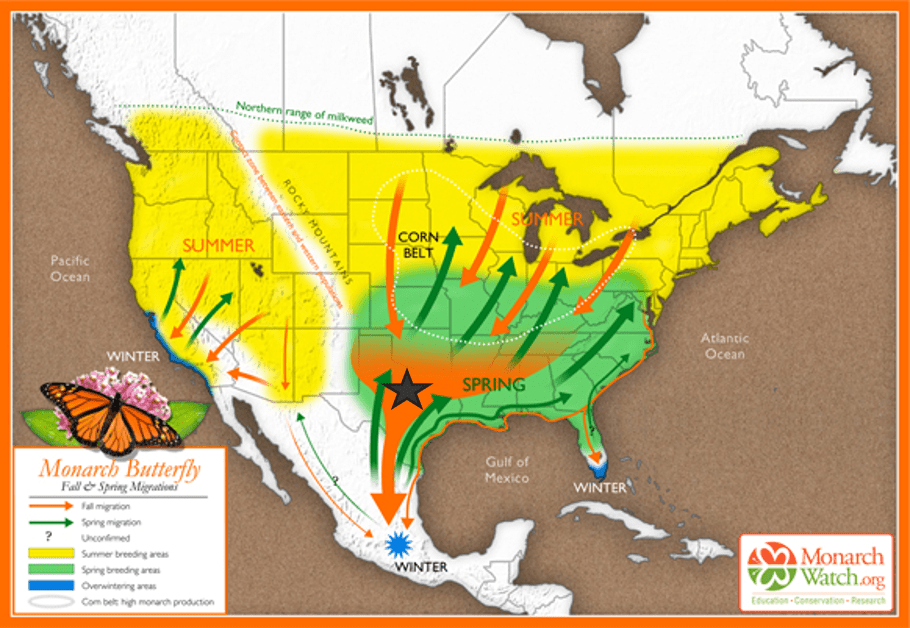
Monarch butterflies (Danaus plexippus) are one of the most recognizable butterflies with notable migration events. The uppersides of the wings are tawny orange, the veins and margins are black, and there are two series of small white spots in the margins. Monarch forewings also have a few orange spots near their tips. Wing undersides are similar, but the tips of forewings and hindwings are yellow brown instead of tawny orange and the white spots are larger. However, monarch abundances have declined by more than 80% over the past 20 years.

Monarch butterflies go through four stages during one life cycle, and through four generations in one year. In February and March, monarchs come out of hibernation to find a mate. They then begin their spring migration north and east to find a place to lay their eggs. This begins stage one and generation one of the new year. In March and April, the eggs are laid on milkweed plants where after four days they will hatch into baby caterpillars. Caterpillars will feed on the milkweed for approximately 2 weeks until they are fully-grown at which point they will begin the process of metamorphosis. Caterpillars will attach themselves to a stem or leaf using silk and transform into a chrysalis. The chrysalis phase last approximately 10 days and is a period of rapid change. The monarch butterfly will emerge from the chrysalis and fly away, only to die 2-6 weeks later after laying eggs for generation number two. The 2nd generation is born in May and June, the 3rd generation is born in July and August, and the 4th generation is born in September and October. Each generation will undergo the same life cycle, except that adult monarchs in the 4th generation will not die 2-6 weeks after emerging from the chrysalis. Instead, this generation migrates to warmer climates where they will live for 6-8 months until it’s time to repeat the process.

The primary factor responsible for this decline is believed to be the losses of critical breeding and overwintering habitat in North America. Timberlake Biological Field Station is located in the middle of the spring and fall migratory pathways for monarch butterflies, making is a perfect location for conservation studies. Therefore, the primary goal of this project is to create and sustain a connected patchwork of suitable habitat throughout Timberlake Biological Field Station.
REU students will:
- restore 0.5 acres of ranch land into suitable habitat for breeding and migrating monarchs